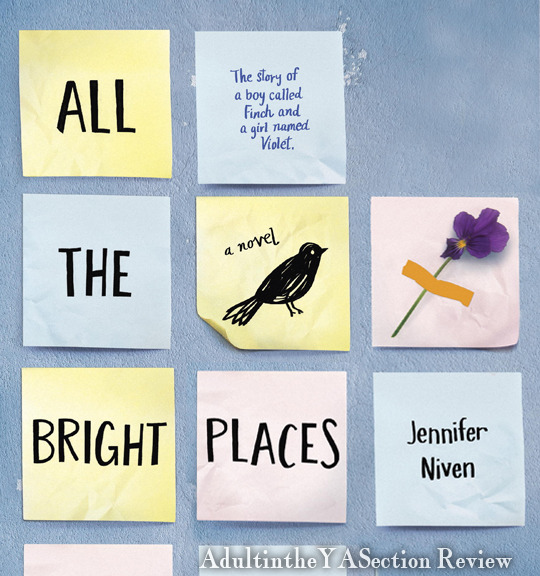Niven, Jennifer. All the Bright Places. New York: Alfred A. Knopf, 2015. Print.
image from: www.jenniferniven.tumblr.com

My Thoughts
I got a copy of this book at last year's library conference for helping prep the Teen Day event. Jennifer Niven was on hand the next day & signed copies for the teens (this photo is one of the girls I took).
I loved the unique cover and stuck it on my TBR pile. That finally happened this month (I had to finish the Amish book first). As I progressed through the book, I noticed I was slowing down the reading. I didn't want to finish it. I didn't want to see what I predicted would happen. Sadly, one of the main characters commits suicide--in spite of the friends, family, help, future plans--all things that couldn't give him enough to stay alive. That really made me sad. Once I read the part of the book that it happens, I had to set the book down for a few days. I needed to grieve for this quirky character who seemed so full of life and fun. I thought about how many faces I see a day so full of life that are hurting. What could I do to help them not take the same action as Finch?
The story begins as "Theodore Freak" (Finch) is contemplating suicide. Instead of killing himself, he actually helps Violet not end her own life. This is strange, because Violet is popular, dates the "right" guy, has the "right" friends--her life seems perfect. Why would she want to kill herself? As the story unfolds, the reader learns of the automobile accident that took Violet's sister Eleanor's life. The reader learns that Violet's life is not perfect at all (Really, who has a perfect life?).
The story is told from alternating narrators: Finch & Violet. This narrative technique seems to be popular in books I'm reading. I'm not sure if it's me or the writing/publishing world, but I've read several books written in this format in the past year.
The book jacket describes the story this way:
When Finch and Violet meet on the ledge of the bell tower at school...it's unclear who saves whom. And when the unlikely pair teams up on a class project to discover the 'natural wonders' of their state [Indiana], they go, as Finch says, where the road takes them: the grand, the small, the bizarre, the beautiful, the ugly, the surprising--just like life....This is a heart-wrenching, unflinching story of love shared, life lived, and two teens who find one another while standing on the edge.I flagged a few things while reading.
- Violet wants to be a writer (until the accident, and then she stops writing). I liked this description. "I used to love words. I loved them and was good at arranging them. Because of this, I felt protective of all the best ones" (Nivens 92).
- On one excursion for the history project, they find a Bookmobile Park where Mr. & Mrs. Carnes "decided to plant them [bookmobile trailers], just like corn, and let folks come to us" (Nivens 130). Hilarious and very visual!
- I flagged where Finch tells how he got the nickname "Freak" and where one of the "popular" kids shows that she's hurt, too.
I'm not sure how I feel about this book. Can I recommend it to others? Which kids will enjoy the story? Which kids will identify with the characters and their internal conflicts? I don't think suicide is glorified in this book, but I will be cautious about recommending it. I like the quirkiness and how the playful chemistry does result in a romantic relationship. I like the message that you can find interesting people and places if you look around and don't prejudge.

No comments:
Post a Comment